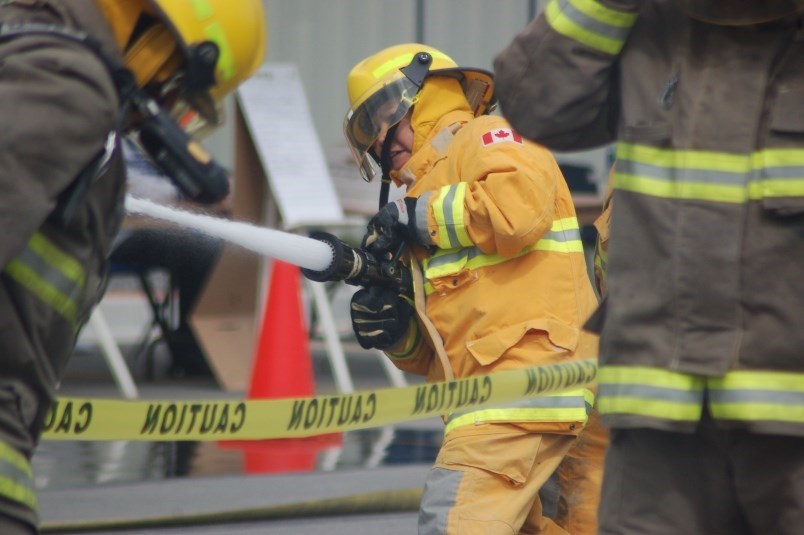The March 9 fire that destroyed Thompson’s Shoppers Drug Mart is undoubtedly a devastating loss for the operator of the pharmacy and drug store, for anybody who worked there, for people who filled their prescriptions there and for anyone who had unclaimed parcels in the store’s postal outlet. It’s never a good thing when a home or business burns down, regardless of whether insurance will cover the damages or not.
That said, it is always a good thing when no one loses their life in a fire, and when firefighters are able to limit damage to adjoining or nearby buildings. By those measures, the response to the Shoppers fire was a success. Firefighters prevented the fire from consuming the whole building.
That they were able to do so is a testament to the value of resources. In addition to their own firefighters and equipment, which includes multiple firefighting vehicles, Thompson Fire & Emergency Services was also able to call in reinforcements from Vale and the Paint Lake Volunteer Fire Department to assist their efforts. City of Thompson heavy equipment and heavy equipment operators were also enlisted to help remove parts of the building and give firefighters better access to hard-to-reach parts of the structure where the fire was continuing to burn.
Was the response perfect? Perhaps not. Fire crews responded to the building twice. The first time was shortly before 2 a.m. Thursday morning. Believing they had put it out, the firefighters ceased their efforts but the blaze flared up again about three hours later and this time it kept burning all day, destroying the drug store in the process. Would it have been better if the fire was totally and completely extinguished following the first response? Obviously yes. But fires do reignite sometimes, which is why firefighters usually keep monitoring sites where they fought a fire after they believe they have put it out because there is always a possibility of a hot spot flaring up.
Whatever shortcomings there may have been with the response, if any, the fact still remains that the firefighters put out the blaze and no one got hurt, though property got destroyed in the process. In some other Northern Manitoba communities, merely having the ability to fight a fire could be looked on as a blessing. The past week saw a fire burn down a multi-unit housing complex in Shamattawa and there was nothing anyone there could do except, essentially, watch it burn. The remote northern First Nation does have a fire truck. However, at the time of the fire, it was out of the community for repairs and therefore of no use for that fire. When a Split Lake apartment building burned down in February, a similar lack of resources made the response less robust than what we saw in Thompson March 9. Sadly, this is an all-too-common occurrence in the north, particularly in First Nations. Sometimes they don’t have a fire truck. Sometimes they do, but it is not working, or they don’t have a place to keep it parked inside and it won’t start because of the cold and because the vehicles they do have are almost invariably secondhand and potentially at the end of, or beyond the end of, their useful life. Sometimes they don’t know who has the keys because they don’t have a fire hall, or it takes a while to track down all the firefighters because there isn’t cell phone service and landlines are the only way to get in touch with them. Certainly they don’t have infrastructure like fire hydrants that city firefighters are used to, as the fire may be somewhere where there isn’t running water. First Nation members are much more likely to die in a fire than Canadians as a whole because their communities don’t have the same ability to respond to fires and because their homes were often built with substandard materials, or there are more fire hazards inside them because the residents are living in overcrowded conditions.
Sometimes in a place like Thompson, people can feel disadvantaged because they don’t have the same opportunities and amenities as people who live in larger cities and, in many cases, that is true. But for many Northern Manitobans, having access to things that exist in Thompson, such as the ability to quickly and effectively respond to fires, is a dream. Sadly, given the pace at which progress is made when it comes to improving the lives of First Nations people who live on reserve, that dream is unlikely to become a reality any time soon, unless major changes are made.



